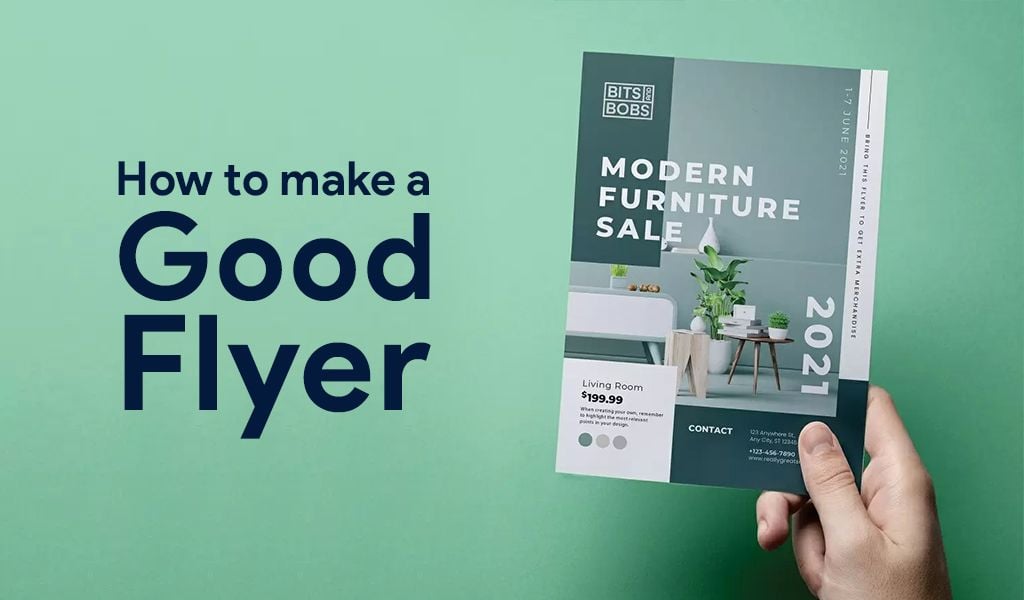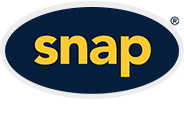How to Make a Good Flyer
)
Flyers are one of the oldest marketing tools that we still use today, and there are still a tonne of benefits to creating and using them for your business.
Flyers are:
- Simple and easy to read
- Cost-effective
- Versatile
- Tangible
Your company can use these benefits to promote your business and special offers or events. They're great for that because they can be localised to specific areas instead of being sent globally via email.
Knowing flyers are amazing, there's got to be a catch right? Well, you have to make sure that it ends up in the hands of a reader instead of the bin.
To make sure your flyer is read, you should consider its purpose and the content you're filling it with. Are you loading it with too many words? Are you offering any incentive for your audiences to read the flyers?
Are flyers and brochures different?
While similar, flyers and brochures aren't exactly the same product. The difference between flyers, leaflets and brochures is defined in quantity and content. Flyers are generally used for large volume printing, and they'll be filled with quick tips and information. Brochures are for large distribution, too, but instead of having a few main points, they'll be filled with more information and tend to have more pages.
Consider these points when creating your flyer with us
Branding:
You could have the most amazing offer going on the market but it won't be any good if people don't know who you are. You should include your brand name and logo so that people will know whose flyer they're reading.
Use pictures:
They say a picture is worth a thousand words and a flyer isn't any different. Putting graphics on your flyers is an inviting, easy to digest way to show the world what you can do.
It's important to remember the size you're printing on and the graphic you're using. You should consider if the resolution will fit onto the size of the paper, it could end up too blurry or hard to see. Learn more about the types of paper and which to use for your custom printing.
When designing your flyer, how does it look when it's folded out and completely open? Brochure printing won't allow for as much freedom as they usually have more pages, but with a flyer, you could make it into a whole printed poster or banner when it's unfolded.
Add texture
Printed brochures, flyers, and catalogues are common. A great way to stand out might be to add custom printed stickers and labels to pages. While we can't print your flyers with stickers already added to the flyer, we can help you customise the texture by offering a range of different materials. Learn about sticker and label printing services in and around Auckland and New Zealand with Snap.
Use colour:
As well as pictures, the colour of the paper and the text you're using can tell the reader something about your business.
Are you a vibrant and energetic company? Maybe you should use some bright colours to intrigue readers.
Use incentives:
You could always offer readers incentives to open and hold onto their flyers. Coupons and discounts are common ways businesses make sure readers are tempted to learn more. It's also a great way to narrow down on where your customers are coming from and learn about your business.
Use a call to action:
Flyers are generally created for a specific event or purpose for your business instead of telling your audiences that you exist.
The call to action should be one of the first things that a reader sees and also one of the last. Consider using language like:
- Call now!
- Find out more!
- Visit us today!
Don't overload the reader:
Attention spans are fickle and you probably don't know the person reading your flyer very well. You should keep information simple and easy to digest with clear and concise language. If the reader is left intrigued and wanting more, then you've created an effective advertisement for your business.
Remember that flyers should be small, our common printing sizes range from DL to A4.
Should you use offset or digital printing for flyers?
Flyers can be printed in two ways, offset and digital. You can learn the differences and how to decide between offset and digital printing here.
For small businesses looking for quick production and a fast turnaround, digital printing will probably be the cheapest option in New Zealand. Oppositely, for larger jobs with a longer production run, offset printing is usually cheaper.
What now?
Ready to reach out to potential customers and pull them into your business? You can read more about our flyer printing services or find a centre near you to come in and chat with us in person.
Ready to get printing? Request a quote for your printing job today by clicking here.
| Tags:General News |
)



